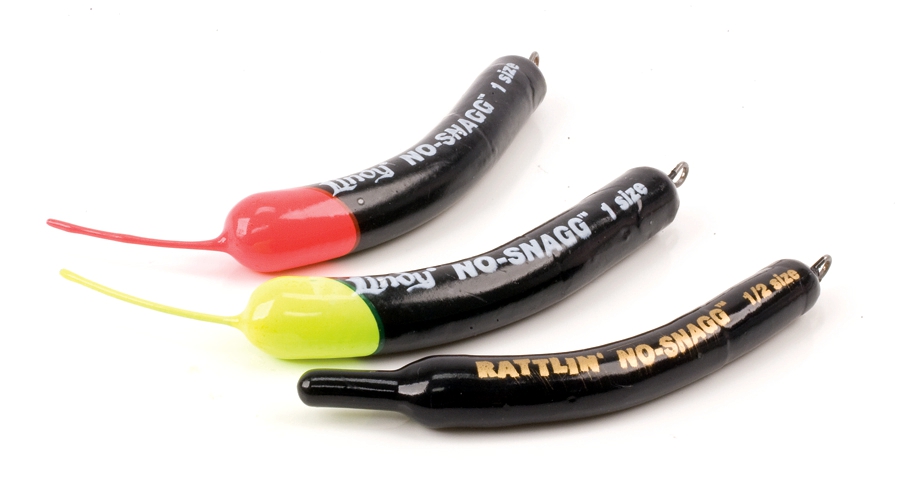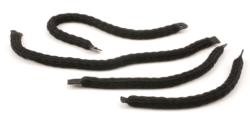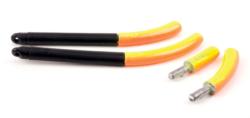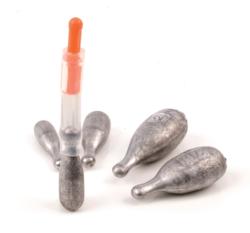Tackle Test: Slip-sinker style

Editor’s note: This article is from Walleye Magazine, an FLW Outdoors publication. Learn more about subscribing to either Walleye Magazine or FLW Outdoors Magazine, now offering e-Editions as well.
———————————————
Though the science behind them is simple enough, today’s sinkers are a far cry from those of yesteryear. When live-bait rigging was first refined by back-trolling, the “shoe-style” all-lead sinker was designed to accommodate the new technique. It was nothing fancy, but it was effective. Slide it on the line above your leader, and let the fish run with the bait, pulling line through the sinker so as not to feel resistance. That’s all that the sinker needed to do to meet expectations.
Fast-forward a few decades to modern sinkers that reflect as much innovation as any other item in your boat. Their quick-change capabilities and snag-defying shapes are the result of an evolution in design fueled by the needs of modern anglers who apply specialized techniques.
Here are a few of the more advanced sinker models on the market:
Lindy No-Snagg slip-sinker
Background
Developed by Ron Lindner, the No-Snagg Slip Sinker was designed to be as snag-free as any sinker can be. Arguably the first in what is now a long line of supersinkers, the No-Snagg was a huge innovation when introduced. The combination of its wire feeler and curved design truly do allow it to glide up and over most hang-ups. If it does hang, it rotates 180 degrees to pull free. Lindy refers to this rotation as a cam action, and it is a large part of the No-Snagg’s effectiveness.
Design
The performance of the No-Snagg owes to its upright design, which is enhanced because the upper half of the sinker is made of buoyant material. Unlike many all-lead sinkers, the wire eye on the No-Snagg is very smooth and minimizes line wear. Just make sure to use a small bead between the sinker and the swivel to prevent terminal tackle from being wedged into the sinker’s eye.
Specs
Weights: six; 1/8 to 1 ounce
Other options: The Rattlin’ version of the No-Snagg Slip Sinker is available in ¼- to 1-ounce models.
Price: $5.86 for two
Contact: lindyfishingtackle.com
Eagle Claw Slinkey Weight

Background
The Slinkey Weight is one of the oldest designs among reduced-snag sinkers, with roots traced to river and salmon fishing. For years, salmon and steelhead fishermen had concocted homemade sinkers with a dropper line and various weights that would hang up less in rivers that were chock-full of wood and other nasty snags. This is the commercial version of that applied ingenuity.
Design
The Slinkey Weight is simple in design. Essentially, it’s a nylon cord filled with shot, then heated at both ends to seal it shut. The Slinkey Weight is commonly used on a traditional slip rig, but is more frequently employed as a drop-sinker on a three-way rig. Flexibility is the key to the Slinkey Weight’s snag-free nature. Another selling point is that it is one of the least expensive options in the snag-free sinker family.
Specs
Weights: eight; ¼ to 1 1/2 ounces
Price: $3.02 to $3.69 per two or three, depending on size
Contact: eagleclaw.com
Fin-Tech Stik “EZ Weight Change” slip-sinker

Background
Take a look at the Fin-Tech catalog and you’ll see many innovative twists on classic tackle. The Tech Stik is one example. Its concept is simple: Change the weight, not the rig. Weights are easily swapped to match fishing conditions. A bonus is that you can remove the weights so they won’t bang against rods and line while you’re moving from one spot to the next.
Design
The upper part of the Tech Stik is a plastic tube about 2 inches long that features a rattle chamber. This is intended to stay on the line regardless of weight choice. Weights are simply interchanged by pushing them into the lower portion of the plastic chamber, where they are held in place by a small stud on the weight itself. The fit is snug, enough so that I found it best to use pliers to remove the smaller weights, where less surface area is available to grip.
Specs
Weights: seven; 1/8 to 1 ounce
Colors: black/orange/chartreuse; black; and black/green/chartreuse
Price: $6.04 to $6.59 for three
Contact: jigfish.com
Wing-It slip-sinker

Background
The first time that I saw or used the Wing-It was at the 2010 National Guard FLW Walleye Tour Championship, where it caused quite a stir. The sinkers were being passed around like candy at summer camp. While not as snag-free as other options, this blue-collar sinker is the ultimate in versatility. It isn’t the prettiest package, but it’s one of the only dual-exchange sinkers on the market.
Design
The design of the weight exchange is straightforward enough. A small plastic piece, the Connect Quick (CQ) Connector, affixes to the line (and can be attached after the swivel is tied on) via a small opening. A rubber tube slides onto the connector, covering the line opening so it stays put. You can also slide it over the line to “peg” the sinker. Then, a bowling-pin-shaped sinker slides up into the rubber tube. Overall, the compact nature of this design seems to be more effective on mud or less-snaggy bottoms. The elongated line guide makes feeding line very easy after strikes, but a small bead is mandatory or swivels will get wedged in the opening.
Specs
Weights: eight; ¼ to 2 ounces
Price: Kits including multiple sizes of slip-sinkers and CQ Connectors are available for $29.99; individual sinkers are also available in packs of 50 to 40, depending on size, for $29.99; packs of 25 CQ Connectors are available for $14.99
Contact: wingitfishing.com
Choosing live-bait hooks
An overwhelming number of FLW Walleye Tour pros rig their live-bait rigs with a simple octopus hook. The only thing that seems to vary in their application is the size. Here is a quick reference guide for the best hook sizes for common types of live bait.

*Some pros prefer a smaller No. 6 for crawlers. If fish are finicky, be willing to experiment with smaller hooks.
**A No. 2 hook will accommodate most sizes of minnows that walleye anglers use. But when using chubs or other minnows longer than 4 inches, skin-hook the chub near the nose. This rigging method will allow for better action, as well as better hookups.